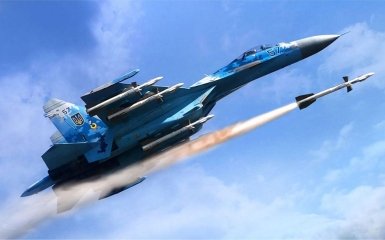Ukraine has recently carried out a series of successful strikes on Russian airbases from which drones were launched. For some time, Russia will be forced to reduce the number of launches.
Points of attention
- Ukraine carried out a series of successful strikes on Russian airbases, wounding 9 people and destroying 120 UAVs
- Russia is forced to reduce the number of launches due to losses and limitations in the use of power aircraft
- British intelligence predicts that strikes against Ukraine will limit Russia's ability to use UAVs for attacks deep inside Ukraine
- There is a possibility that Russia will redirect its UAV operations to less vulnerable bases to temporarily reduce exposure
- Ukraine can continue its campaign against Russian UAVs, taking advantage of its successes and losses
What are the consequences of successful strikes on Russian airbases
As Ukraine countered Russia's plans to establish control of the airspace over Ukraine, Russia was limited in its ability to use its considerable fast jet and bomber forces, the summary notes.
To overcome this disadvantage, Russia has come to rely heavily on the widespread use of relatively inexpensive unmanned aerial vehicles (UAVs). They were used to disrupt Ukrainian air defence and attack targets, both military and civilian, beyond the range of its artillery.
On June 21, the Ukrainian Navy and Security Service of Ukraine (SSU) reported that they had struck the 726th Russian Air Defense Training Center at Yeisk Airfield, Russia. This base is one of at least five from which Russia conducts drone strikes against Ukraine. It is reported that as a result of this strike, 120 Udrones of various types were destroyed, and 9 people were injured.
According to British intelligence, in the short term, these strikes will lead to some disruption of Russia's ability to use UAVs to strike targets deep inside Ukraine from these locations.
There is a real possibility that Russia will disperse its UAV operations to less vulnerable bases, and thus the impact is likely to be temporary. It is likely that Ukraine will take advantage of its recent successes and continue the campaign against UAVs to the detriment of Russia, the British Ministry of Defence notes.
Latest Defence Intelligence update on the situation in Ukraine — 28 June 2024.
— Ministry of Defence 🇬🇧 (@DefenceHQ) June 28, 2024
Find out more about Defence Intelligence's use of language: https://t.co/rdsFLqcOYi #StandWithUkraine 🇺🇦 pic.twitter.com/wKfdMiYaCF
What is known about the latest AFU strikes on Russian air bases?
It will be recalled that on June 21, in the city of Yeisk in the Krasnodar region of the Russian Federation, the storage and training sites of Shahed-type kamikaze drones were attacked. A total of 120 Russian drones of various types were destroyed.
In addition, on June 25, a fire broke out in the area of Cape Chauda in the occupied Crimea. The launch of "Shahed" drones on Ukraine took place there.




